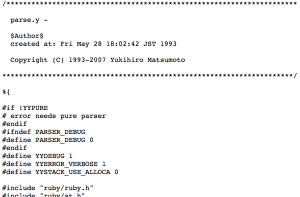 The Internet has officially gone galactic. Engineers at NASA’s Jet Propulsion Laboratory in Pasadena, California announced today that they had successfully tested a deep space communications network based on the architecture of the Internet. Using software called Disruption-Tolerant Networking (DTN), NASA was able to transmit images of space to and from a spacecraft located about 20 million miles from Earth.
The Internet has officially gone galactic. Engineers at NASA’s Jet Propulsion Laboratory in Pasadena, California announced today that they had successfully tested a deep space communications network based on the architecture of the Internet. Using software called Disruption-Tolerant Networking (DTN), NASA was able to transmit images of space to and from a spacecraft located about 20 million miles from Earth.
“This is the first step in creating a totally new space communications capability, an interplanetary Internet,” said NASA team leader Adrian Hook.
The DTN software is the fruition of a ten-year partnership between NASA and Vint Cerf, widely considered to be the “father of the Internet,” who is currently a vice president at Google. Cerf co-designed the TCP/IP protocol that serves as the foundation of the Internet. The DTN works in a different manner that TCP/IP in order to send data across such a wide expanse of space and deal with frequent disconnections and disruptions.
“Glitches can happen when a spacecraft moves behind a planet, or when solar storms and long communication delays occur. The delay in sending or receiving data from Mars takes between three-and-a-half to 20 minutes at the speed of light,” according to a NASA press release.
Unlike TCP/IP, the DTN protocol never assumes that there will be a continuous connection, says NASA. If a destination path can’t be found, packets are held at the current node until a clear path is located, rather than discarded. That way, the information always eventually finds its way to its destination.
Current deep space communications are rather clumsy, requiring a team on the ground to manually direct each packet from point to point and tell it where to go. The DTN, however, allows all that to be done automatically.
In October, NASA initiated a month-long series of tests of the fledgling deep space Internet, which currently consists of 10 nodes. One node is the spacecraft Epoxi, which is on a two year mission to encounter the Comet Hartley. The other nine nodes are located on Earth at the Jet Propulsion Laboratory site in California and simulate Mars landers, orbiters, and operations centers that could be part of a future deployment of the network.
According to NASA, the new galactic Internet network could enable a number of new missions over the next few years in which reliable communication is paramount, such as space flights that involve multiple spacecraft. That also includes the possibility of sending humans back to the surface of the moon, where astronauts would need a method to communicate with Earth reliably. The next round of tests for the DTN will take place next summer, when the network software will be loaded onto the International Space Station.
Note on the image: Mozilla and Firefox don’t actually have anything to do with this project at NASA, as far as we know. We just thought the logos fit together nicely and communicated the concept well!
 Josh Catone
Josh CatoneBefore joining Jilt, Josh Catone was the Executive Director of Editorial Projects at Mashable, the Lead Writer at ReadWriteWeb, Lead Blogger at SitePoint, and the Community Evangelist at DandyID. On the side, Josh enjoys managing his blog The Fluffington Post.




